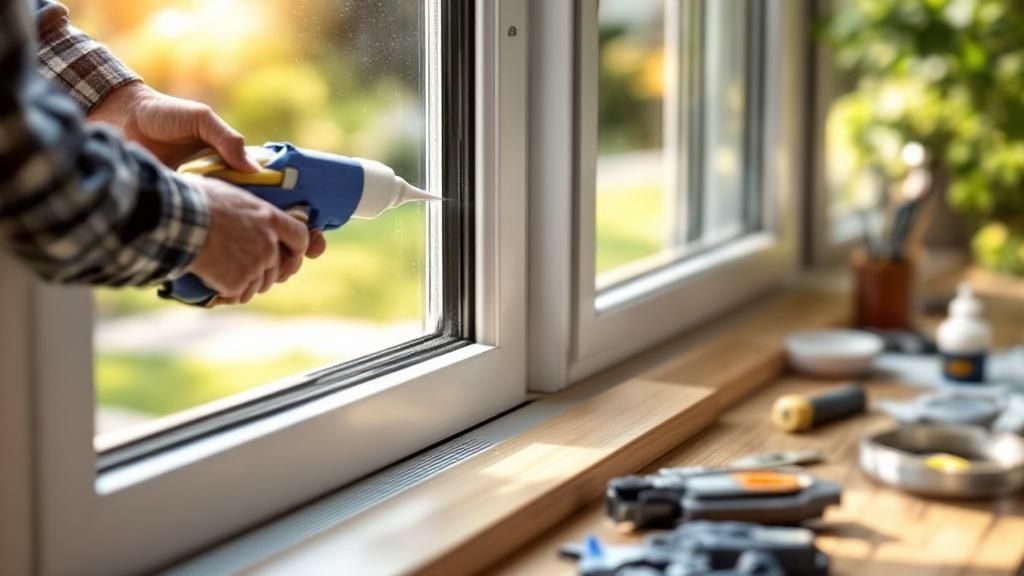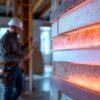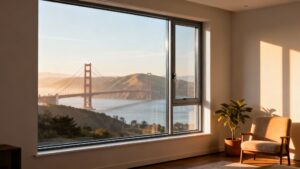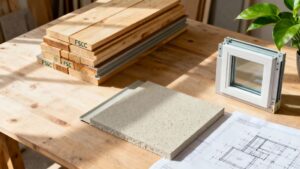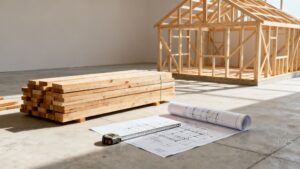Properly weatherproofing your windows and doors is one of the smartest upgrades you can make to your home. It’s all about sealing up air leaks to prevent drafts, which keeps your heated or cooled air inside. This simple fix can lead to significant savings and a much more comfortable home, no matter the season.
Benefits of Weatherproofing Your Bay Area Home
If you’ve ever felt a chill near a window on a foggy San Francisco morning, you know the problem. For Bay Area homeowners and contractors, weatherproofing is a high-return investment that tackles our unique microclimates.
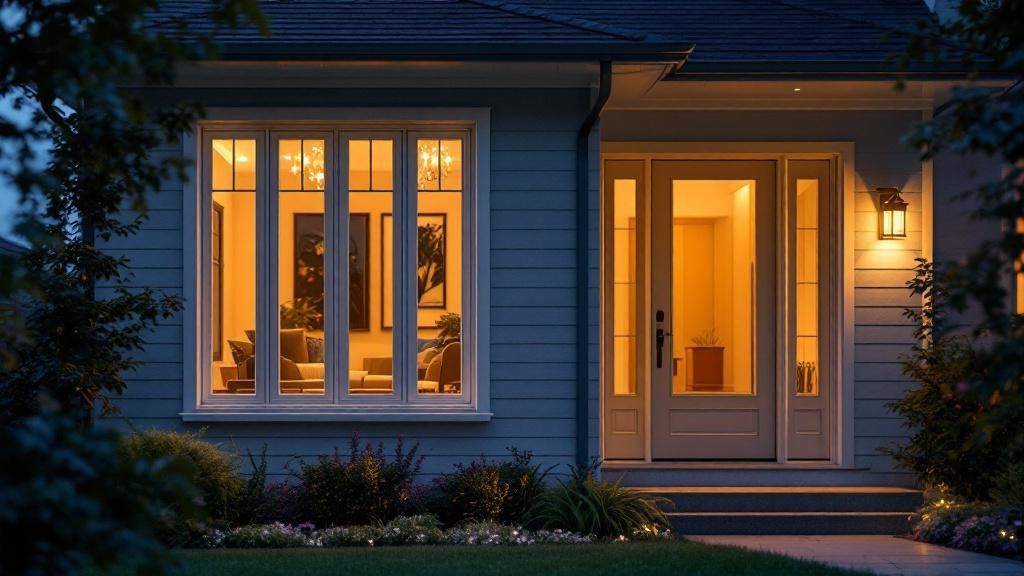
This process is about more than just stopping drafts. It’s a critical strategy for managing a building's energy performance and overall health.
The Real Benefits of a Well-Sealed Home
Effective weatherproofing solves several problems at once, making it a powerful upgrade. According to ENERGY STAR, sealing air leaks can save homeowners up to 15% on heating and cooling costs. In the Bay Area, where utility rates are high, those savings add up quickly.
But the advantages don’t stop there. A properly sealed home delivers much more:
- Improved Year-Round Comfort: Sealing leaks eliminates cold drafts in the winter and reduces heat gain in the summer. This keeps your living spaces consistently comfortable.
- Enhanced Indoor Air Quality: Sealing gaps also prevents pollen, dust, and other outdoor pollutants from entering your home. This is a huge benefit for anyone with allergies.
- Increased Home Value: An energy-efficient home is more attractive to potential buyers. Investing in weatherproofing is a tangible selling point that shows a property has been well cared for.
Meeting California's Energy Standards
California has some of the strictest energy codes in the nation. Properly sealed windows and doors are fundamental to meeting these standards, ensuring a home is both environmentally responsible and cost-effective. If you're considering new installations, it's crucial to understand your options; you can learn more about key considerations when choosing windows and doors.
A well-sealed home envelope is the first line of defense against energy waste. For more specific ideas, it's worth exploring various window insulation solutions. This proactive approach helps you comply with local building codes in places like Berkeley and Oakland and positions your property for long-term efficiency.
How to Find Hidden Air Leaks in Windows and Doors
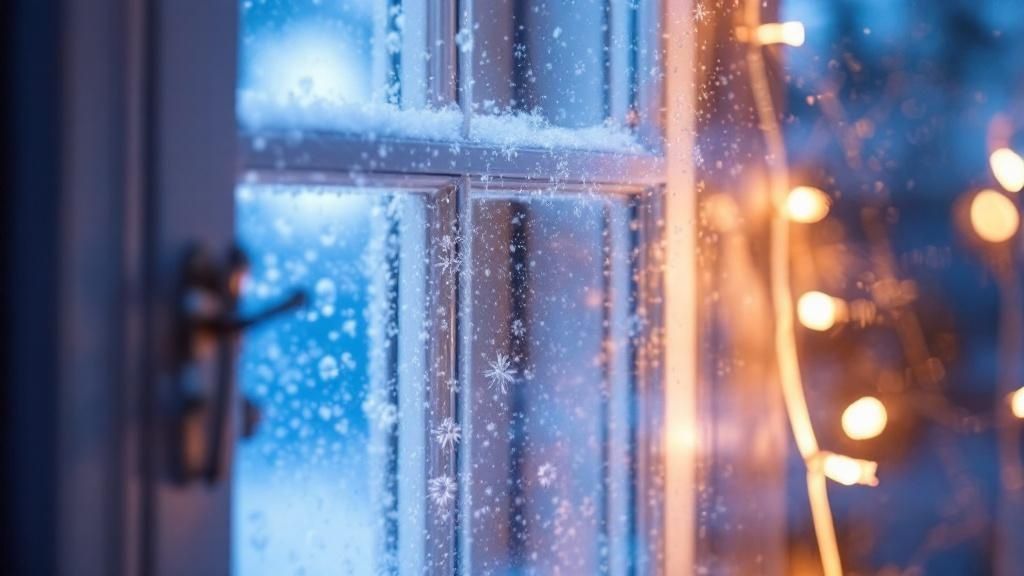
Before you start sealing, you need to find where the air is leaking. These gaps are often tiny, but together they can significantly impact your energy bills. Luckily, you don’t need expensive gear to find them.
Simple Diagnostic Tests You Can Do
These low-tech tests are remarkably good at pinpointing the exact source of a draft. They are easy enough for homeowners but also reliable for professional contractors.
- The Incense Test: Light a stick of incense and hold it near the seams of your windows and doors. If the smoke wavers, gets sucked out, or is blown inward, you've found a leak.
- The Dollar Bill Test: This is a classic method for checking seals on doors and operable windows. Close the door or window on a dollar bill; if you can pull it out with no resistance, your weatherstripping is too loose.
- The Flashlight Test: You'll need a partner for this one. At night, have one person stand outside and shine a bright flashlight around the perimeter of each window and door. From inside, look for any light bleeding through.
Finding these leaks is the first step toward a more comfortable and efficient home. Once you've mapped out your problem areas, you're ready to tackle them.
Common Failure Points to Check
Air leaks often appear in predictable places as homes settle and materials age. Focus your inspection on these key areas.
Pay extra close attention to these hotspots:
- Exterior Caulk Lines: Check the seam where the window or door frame meets your siding. Is the caulk cracked, pulling away, or missing? This is a major culprit.
- Window Sashes and Door Panels: Inspect the weatherstripping where moving parts meet the stationary frame. It can become compressed, torn, or brittle over time.
- Thresholds and Door Sweeps: The bottom of an exterior door is a huge source of drafts. Ensure the door sweep creates a firm seal against the threshold.
- Lock and Latch Plates: Small gaps can easily form around hardware on both windows and doors, creating a pathway for air.
Knowing where to look is half the battle. After identifying these weak spots, you can create a solid plan for weatherproofing your windows and doors.
Choosing the Right Weatherproofing Materials for Your Project
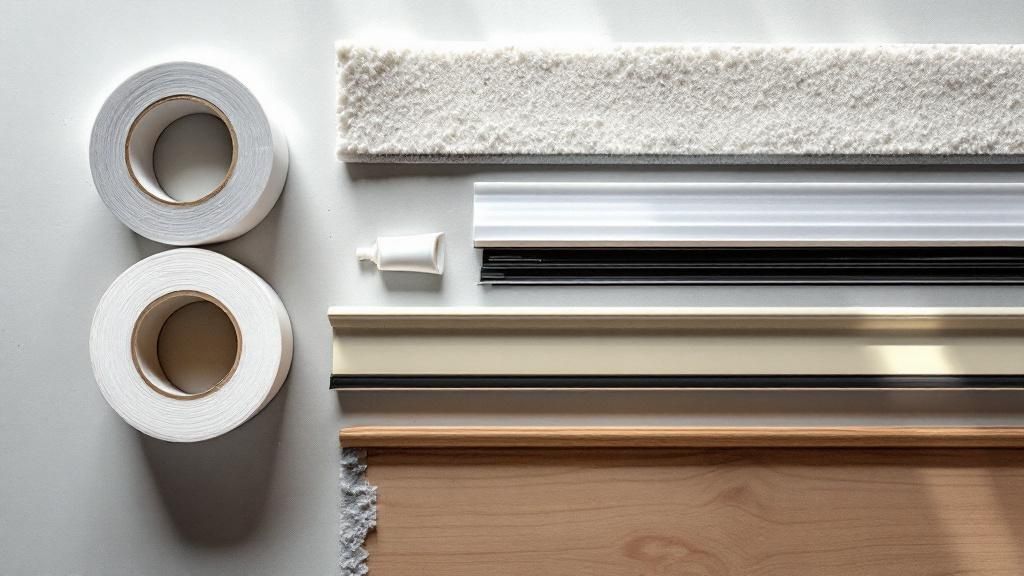
Selecting the right product for a specific job is the secret to a seal that lasts. For builders and homeowners in the Bay Area, choosing durable materials from a trusted lumberyard like Truitt & White is key.
Picking the right material is an investment in your home's long-term efficiency. The global market for high-performance windows and doors is projected to grow significantly as builders and homeowners demand better thermal performance. You can discover key market insights on OpenPR.com to see the trends.
Your Guide to Weatherproofing Materials
This table can help you select the right material for your needs.
| Material Type | Ideal Application | Expected Durability | Installation Skill Level |
|---|---|---|---|
| Silicone Caulk | Exterior gaps, wet areas, high-movement joints | 10-20+ years | Intermediate |
| Latex Caulk | Interior trim, small gaps, dry areas | 5-10 years | Beginner |
| Foam Tape | Window sashes, door frames (less-used doors) | 1-3 years | Beginner |
| V-Strips | Double-hung window channels, door jambs | 5-10+ years | Intermediate |
| Tubular Gaskets | Irregular gaps around doors, large openings | 5-10 years | Beginner-Intermediate |
| Door Sweeps | Bottom of exterior doors | 3-7 years | Beginner |
Understanding Caulk and Weatherstripping
Caulk is for sealing stationary gaps, like the seam between a window frame and the wall. Weatherstripping is for the moving parts of your windows and doors.
For exterior joints in the Bay Area, a 100% silicone caulk is tough to beat. It offers excellent flexibility and waterproofing, standing up to our region's rain and fog. For interior trim, a paintable latex caulk with silicone provides a clean, professional finish.
Common weatherstripping types include:
- Foam Tape: Easy to install with a self-adhesive back. It’s affordable but not the most durable option.
- V-Strips (Tension Seals): Made from tough vinyl or bronze, these spring open to create a very tight seal. They are highly effective and last a long time.
- Tubular Rubber or Vinyl Gaskets: These hollow tubes are fantastic for sealing large or uneven gaps, often used around doors.
Remember this simple rule: if it moves, use weatherstripping. If it’s stationary, use caulk. For a deeper look at how materials impact energy bills, our guide on choosing energy-efficient windows is a great resource.
Step-by-Step Guide to Sealing Gaps
Now that you have the right materials, it’s time to get to work. A professional-quality seal depends on good technique. This is where attention to detail turns a simple fix into a long-lasting solution.
How to Apply Caulk Correctly
Applying caulk seems easy, but a few pro tips make all the difference. The secret is in the preparation and application.
First, surface preparation is non-negotiable. Use a utility knife to scrape out all old, cracked sealant. Then, clean the area with isopropyl alcohol to remove any dust or residue.
Next, prep your caulk tube. Cut the nozzle at a sharp 45-degree angle, starting with a very small opening. When applying, maintain steady pressure and push the bead of caulk into the gap for a stronger seal.
How to Install Weatherstripping
For the moving parts of windows and doors, weatherstripping is the answer. The process is straightforward: measure carefully, clean the surface, and ensure a snug fit.
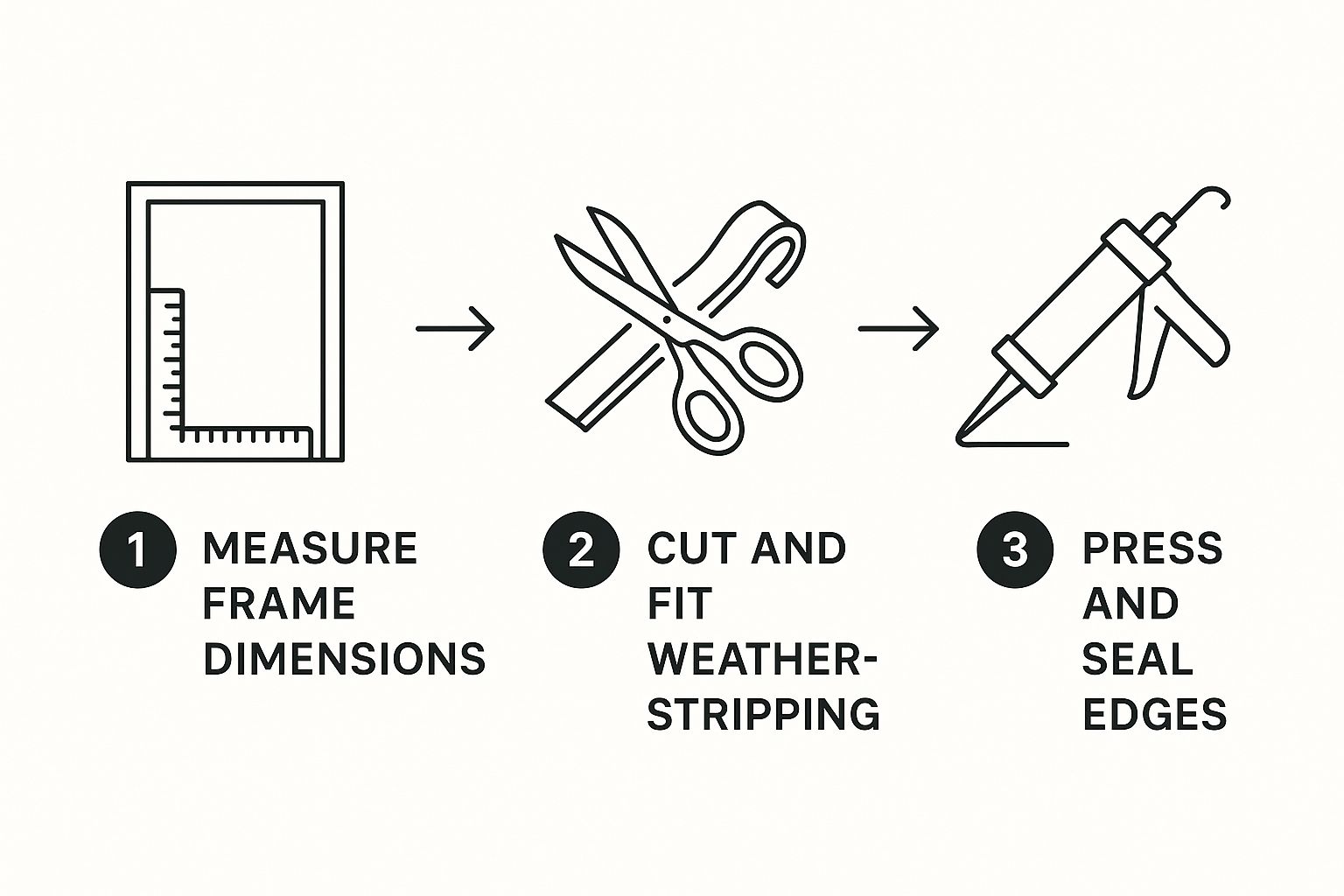
A clean surface is critical for adhesion, especially for self-adhesive types. Wiping the frame with isopropyl alcohol ensures the adhesive forms a solid bond that won’t peel away.
The Bay Area’s climate puts stress on building materials. For weatherproofing to hold up here, it must accommodate seasonal expansion and contraction. For high-traffic doors, choose durable solutions like a heavy-duty tubular gasket or V-strip. To better understand how these components work together, explore our overview of how windows and doors combine design with durability.
When to Repair vs. Replace Windows and Doors
Simple weatherproofing can do a lot, but sometimes replacement is the better long-term solution. Knowing when to stop repairing and start replacing can save you time, money, and frustration.
For homeowners and contractors in the Bay Area, this decision is an investment in energy efficiency and property value. You need a home that can handle everything from foggy Berkeley mornings to hot Oakland afternoons.
Signs It's Time for a Replacement
Some problems point to deeper failures where a simple repair won't cut it. Look for these major warning signs:
- Persistent Condensation Between Panes: If you see fog or moisture trapped between the layers of glass in a double-pane window, the seal has failed. This means the window's insulating gas is gone, and its energy efficiency is permanently reduced.
- Warped or Rotting Frames: Wooden frames that have started to rot or warp compromise the window's structural integrity. This makes it difficult to operate and secure.
- Difficulty Opening and Closing: Windows and doors that stick, jam, or won't lock properly are a security risk. This usually means the unit no longer fits correctly in its frame.
If you recognize these issues, it may be time for a replacement. Our helpful resource details the top thirteen signs it's time to replace your windows and doors.
Advances in Modern Window Technology
Replacing old units opens up a world of advanced solutions. High-performance brands like Marvin and Andersen now integrate sophisticated features for maximum energy efficiency.
- Low-E (Low-Emissivity) Coatings: This is a microscopically thin, transparent layer of metal on the glass. It reflects heat back to its source, keeping your home warmer in the winter and cooler in the summer.
- Gas Fills: The space between glass panes is filled with a dense, inert gas like argon or krypton. These gases are heavier than air, which slows heat transfer and adds insulation.
The materials themselves have also improved. The market for composite doors and windows is growing, driven by strict standards from organizations like ENERGY STAR. To see the full market trends, you can explore the industry analysis on GrandViewResearch.com. Choosing replacement over repair is about long-term value.
Frequently Asked Questions About Weatherproofing
We hear many questions from Bay Area builders, contractors, and homeowners. Here are answers to some of the most common ones.
1. How often should I check my window and door seals?
You should inspect your home’s seals once a year, preferably in the fall before the rainy season. An annual checkup is a simple task that prevents small cracks from turning into major leaks during a winter storm.
2. Can I weatherproof a historic Bay Area home without ruining its character?
Yes. For historic properties in Berkeley or San Francisco, use less invasive, reversible solutions. Options like bronze V-strips, interior storm windows, and high-quality rope caulk improve efficiency while preserving the home's original architecture.
3. How much can I realistically save by weatherproofing?
The savings add up quickly. According to ENERGY STAR, properly sealing air leaks can save homeowners up to 15% on heating and cooling costs. In the Bay Area, this can mean hundreds of dollars back in your pocket each year.
4. Should I use caulk or weatherstripping for a window gap?
The rule is simple: caulk for stationary gaps, weatherstripping for moving parts. Caulk seals non-moving seams, like where a window frame meets the wall. Weatherstripping is for parts that open and close, like a window sash.
5. What is the single most important fix for a drafty door?
The number one culprit for a drafty door is a worn-out seal at the bottom. The gap between the door and the threshold is often the biggest source of air leakage. Replacing an old door sweep is one of the most effective fixes you can make.
For personalized advice on the best weatherproofing materials for your Bay Area project, the experts at Truitt & White are here to help. Visit our Berkeley showroom for expert advice.


